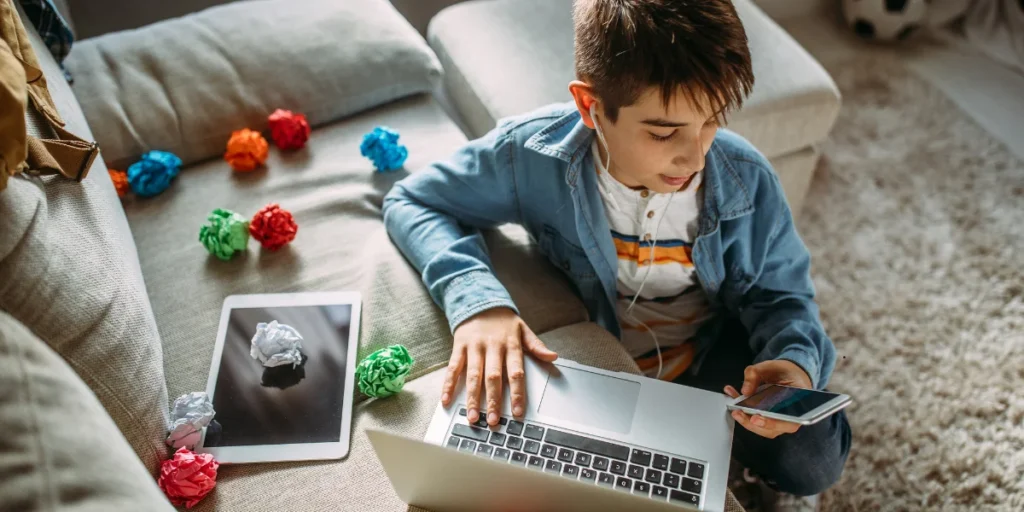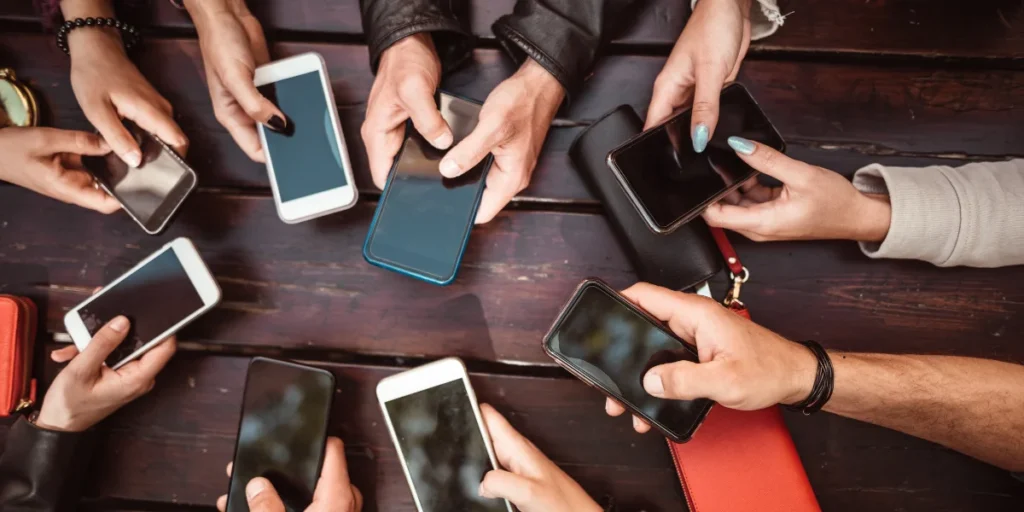Australia will no longer allow people under 16 to use social media starting December 10. The social media ban will have big effects on families and platforms alike. Companies failing to enforce these regulations could face fines of up to $50 million. However, teenagers are already developing workarounds to circumvent these new laws.
With statistics indicating a 50% rise in teenage mental health issues over the previous 15 years, the government’s takes this move as a result of concern about the mental health of young people. Meanwhile, some platforms are already implementing changes—Instagram’s parent company, Meta, has announced that content available to users aged 13-18 will be equivalent to a US PG-13 rating, with these changes gradually rolling out in Australia and other countries.
This guide examines what the social media ban in Australia entails, its impact on children and families, and provides practical steps parents can take to navigate these changes while keeping their children safe in today’s digital environment.
Understanding the Social Media Ban in Australia

The social media ban in Australia marks the first legislation of its kind worldwide, shifting responsibility for online child safety from parents to tech companies. Passed on November 28, 2024, the Online Safety Amendment (Social Media Minimum Age) Bill establishes 16 as the mandatory minimum age for social media accounts. Notably, parental consent cannot override this restriction.
The ban targets platforms whose “sole or significant purpose” is to enable social interaction between users who can post content and interact with each other. Based on this definition, Facebook, Instagram, X (formerly Twitter), Snapchat, TikTok, and, surprisingly, YouTube are expected to fall under these regulations. Nevertheless, several platforms, including YouTube, are contesting their inclusion.
Furthermore, platforms must implement “reasonable steps” to prevent Australian children from creating accounts and must deactivate existing underage accounts. Although ID verification can be one method for age verification, companies cannot require government identification as the sole option. Instead, they must offer alternatives, such as age estimation through AI facial analysis (92% accurate for individuals 18 and above) or behavioural data analysis.
Services primarily focused on messaging, gaming, health, or education remain exempt from the ban. This includes WhatsApp, Messenger (with core functions), online games, Google Classroom, and YouTube Kids. Yet, “shape-shifting” by companies attempting to avoid inclusion has complicated enforcement efforts.
How the Ban Affects Children and Families?

The forthcoming social media ban presents both challenges and benefits for Australian families. Research indicates a 50 per cent increase in mental health problems among young people over the past 15 years. Yet, experts debate whether social media is a primary contributor or merely a minor factor.
For many parents, the ban represents a welcome intervention, with 68 per cent supporting restrictions for under-16s. As one parent explained, “Let kids be kids. Some adults cannot handle the pressure of social media, so why let kids deal with it?”. Additionally, the legislation removes difficult decisions from parents who previously felt pressured to allow accounts despite concerns.
The ban particularly affects several vulnerable groups. Regional teenagers face greater isolation, especially those living on remote farms, “50 kilometres away from the next property“. Equally concerning, the restrictions impact LGBTQIA+ youth and neurodivergent adolescents who rely on digital platforms as “a lifeline” and “primary form of connection”.
Young content creators also face disruption, with teenagers like 14-year-old Stella from Tasmania worried about losing YouTube income. Moreover, questions remain about digital literacy—many wonder how children will develop the necessary skills if they cannot access social media until they are 16, potentially creating challenges when restrictions are lifted.
You May Also Be Interested In: Why Experts Say We Must Restrict Smartphones in Schools: The Real Evidence
What Parents Need to Know and Do

With the social media ban approaching, parents must prepare to help their children navigate this significant transition. Nearly 70% of parents already find parenting more challenging than they did 20 years ago, with technology and social media cited as the top reasons.
Creating a family media plan is essential. This should include balanced screen time, content boundaries, and privacy protections. Establishing tech-free zones, primarily during mealtimes and at least one hour before bedtime, helps foster in-person connections and improve sleep quality.
Parents should model the behaviour they wish to see. Children learn from observation; consequently, parents’ own social media habits directly influence their children’s attitudes toward technology.
Teaching age-appropriate digital literacy remains vital. Regular conversations about online experiences, privacy settings, and potential risks empower children to make better decisions across all digital platforms.
For children struggling with the ban, parents can offer alternative communication methods. Research shows transitioning from screens is smoother when parents provide clear time limits and explain what activity will follow. Offering limited choices gives children a sense of control in the process.
Above all, remember the ban doesn’t eliminate every online risk. Continue teaching your child safety skills for all digital environments and reassure them that they can always discuss concerns with you.
Related Article: Social Media in Australia: Statistics and Insights for 2024
Conclusion – Social Media Ban
Australia stands at the forefront of digital protection for young people, with its groundbreaking social media ban for users under 16. This legislation shifts responsibility from parents to tech companies while creating both challenges and opportunities for families nationwide. The ban undoubtedly affects various groups differently – rural teenagers might face increased isolation, while LGBTQIA+ and neurodivergent youth could lose vital connection platforms.
Parents now face the task of guiding children through this significant transition. Creating a comprehensive family media plan certainly helps establish healthy digital habits. This approach should include clear boundaries, tech-free zones, and consistent enforcement. Equally important, parents must demonstrate the digital behaviour they hope to instil, as children often mirror what they observe rather than what they’re told.
Despite the ban, digital literacy remains essential for young Australians. Children still require guidance on navigating online spaces safely, understanding privacy concerns, and developing critical thinking skills regarding digital content. Alternative communication methods can also ease the adjustment period for teenagers accustomed to social platforms.
Families need to adjust as the social media landscape continues to change quickly. Though the ban aims to protect children from potential harm, it cannot eliminate all online risks. Parents still serve as the primary guardians of their children’s digital well-being. Open communication, thoughtful guidance, and balanced approaches to technology use ultimately create the strongest foundation for children’s healthy relationship with the digital world – both now and after they reach the age of 16.
What is the new social media ban in Australia, and who does it affect?
The new law in Australia bans social media use for children under 16, starting from December 10. It affects platforms like Facebook, Instagram, X (Twitter), Snapchat, TikTok, and potentially YouTube, requiring them to prevent underage users from creating accounts.
How will social media companies verify users’ ages?
Companies must implement ‘reasonable steps’ to verify ages, which may include AI facial analysis, behavioural data analysis, or other methods. They cannot rely solely on government ID for verification but must offer alternative options.
Are there any exemptions to the social media ban?
Yes, services primarily focused on messaging, gaming, health, or education are exempt. This includes platforms such as WhatsApp, Messenger (with its core function), online games, Google Classroom, and YouTube Kids.
How can parents help their children transition off social media?
Parents can create a family media plan, establish tech-free zones, model good digital behaviour, and offer alternative communication methods. It’s important to have regular conversations about online experiences and teach age-appropriate digital literacy skills.






